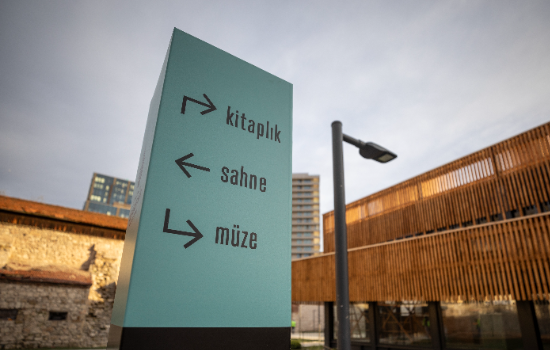Following a comprehensive restoration and adaptive reuse project carried out by the Istanbul Metropolitan Municipality Department of Urban History and Promotion, and the İBB Heritage teams, the historic building in Ataköy has been transformed into a public living space under the name “Baruthane.” With its library, museum, observation terrace, cultural event spaces, multipurpose units, and social venues, Baruthane has been made available for the people of Istanbul. This newly developed area not only preserves a historic structure but also allows culture and art to seamlessly coexist with daily life.
Baruthane brings fresh energy to Istanbul’s cultural and artistic life with its extensive social areas, and the Baruthane Museum—featuring a 250 square meter exhibition area—is a key part of this transformation. The museum opened its doors to art lovers on January 9, 2024.
History
Known as Istanbul Baruthanesi, Bakırköy Baruthanesi, or Baruthane-i Amire, construction of the site began in 1698 and was completed in 1700, with production commencing at the factory in 1701. In 1707, an accident destroyed all the buildings of the gunpowder factory, which were then rebuilt. After being damaged by a fire in 1725, the affected parts were repaired, and operations resumed in 1727. Another major fire in 1765, caused by the explosion of 166 quintals of gunpowder, led to comprehensive repairs. Large-scale renovation works were undertaken in 1785. After a fire in 1791, repairs were carried out under the supervision of the period’s administrator, Ahmed Ağa.
In 1896, new facilities were established within the Baruthane for the production of smokeless gunpowder. During the Republican era, it passed to the Military Factories Administration, and in 1955, to the Machinery and Chemical Industry Institution. In 1972, the building was operated by Ataköy Touristic Facilities and has since been used for various purposes. Some of the structures that have survived from Baruthane-i Amire to today include four rectangular-plan buildings, a guard tower, a fountain, and the Hünkâr Pavilion.
Ownership of Baruthane was transferred to the Istanbul Metropolitan Municipality in 2018. Survey and restitution projects were approved in 2020, and the adaptive reuse project in 2022. The revitalized site has now been reintegrated into the city as a valuable public resource.
